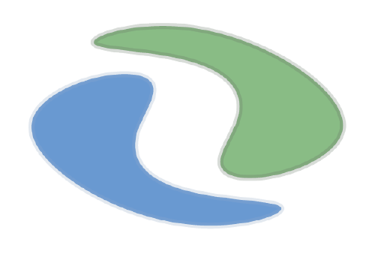Add your promotional text...
Common name: Puncture Vine / Gokshura / Caltrop
Scientific name: Tribulus terrestris L.
Family: Zygophyllaceae
🌿 Description
Tribulus terrestris is a prostrate to ascending annual herb that typically forms dense mats up to 1 m across. Its stems are covered with fine hairs and bear opposite, pinnate leaves composed of 4–8 pairs of small oblong leaflets.
The plant produces bright yellow, five-petaled flowers about 8–12 mm wide. Its distinctive fruit is a woody burr made up of five segments, each bearing two sharp spines—well-known for their ability to puncture bicycle tires and animal hooves. The root is slender, with a faintly aromatic, earthy odor.
🌍 Distribution & Habitat
Native to warm temperate and tropical regions of Europe, Asia, and Africa, T. terrestris is now naturalized worldwide, including the Americas, Australia, and the Mediterranean Basin.
It thrives in arid and semi-arid habitats, roadsides, and disturbed soils. Prefers sandy or well-drained loams with full sun exposure and minimal shade. It is drought-tolerant and can survive in nutrient-poor soils with low moisture availability.
⚗️ Phytochemistry
The plant contains a rich array of secondary metabolites, notably saponins, flavonoids, glycosides, and alkaloids, concentrated mainly in its fruits and roots.
Key bioactive compounds include:
Protodioscin (steroidal saponin)
Diosgenin
Tribulosin
Harmine, Harman (β-carboline alkaloids)
Kaempferol, Quercetin, Rutin (flavonoids)
These constituents contribute to its reputed effects on hormonal regulation, libido enhancement, and antioxidant activity.
💊 Traditional & Medicinal Uses
In Ayurveda, Tribulus terrestris (known as Gokshura) is considered a potent Rasāyana and Vr̥ṣya dravya (aphrodisiac and rejuvenative). It is often prescribed for strengthening the kidneys, urinary tract, and reproductive system.
Traditional uses include:
Supporting male reproductive health and libido
Treating urinary disorders and kidney stones
Balancing hormonal levels
Acting as a mild diuretic and adaptogen
Managing inflammation and edema
In Traditional Chinese Medicine, it is called Bai Ji Li and used to calm the liver, clear wind, and improve eyesight.
🌱 Cultivation & Propagation
Propagation: Readily grown from seed; germinates quickly under warm, dry conditions.
Climate: Prefers arid to semi-arid regions with temperatures between 20–35 °C.
Soil: Tolerant of sandy, rocky, and poor soils; requires good drainage.
Sunlight: Full sun exposure is essential for flowering and fruiting.
Lifecycle: Annual herb, reproduces prolifically through burr-like seeds.
🧬 Pharmacological Studies
Extensive pharmacological studies suggest potential bioactivities of T. terrestris, including:
Androgen-modulating effects — due to protodioscin, proposed to enhance testosterone levels (though evidence is mixed).
Diuretic and nephroprotective — supports urinary tract function and kidney health.
Cardioprotective — may help lower cholesterol and support vascular health.
Antioxidant and anti-inflammatory — combats oxidative stress and inflammation.
Adaptogenic and energizing — traditionally used to improve stamina and reduce fatigue.
However, clinical trials in humans have shown variable results, with some studies reporting minimal hormonal effects.
⚠️ Cautions
Overuse may cause mild stomach upset or restlessness in sensitive individuals.
Should be avoided during pregnancy.
May interact with diuretics, antihypertensive drugs, or hormone-sensitive conditions.
🔍 Field Identification Notes
Habit: Prostrate, mat-forming herb with hairy stems.
Leaves: Small, opposite, pinnate with oblong leaflets.
Flowers: Bright yellow, five petals, solitary, 8–12 mm wide.
Fruit: Spiny burr with five hard segments, each bearing two sharp spines.
Habitat: Dry, sandy or disturbed soils; roadside weed in warm climates.
📚 References
Adaikan, P. G., et al. (2000). Proerectile pharmacological effects of Tribulus terrestris extract on the rabbit corpus cavernosum. Life Sciences, 71(12), 1385–1396.
Neychev, V. K., & Mitev, V. I. (2005). The aphrodisiac herb Tribulus terrestris does not influence the androgen production in young men. Journal of Ethnopharmacology, 101(1–3), 319–323.
Singh, R., et al. (2017). Pharmacological and therapeutic potential of Tribulus terrestris: A review. Phytotherapy Research, 31(11), 1589–1604.
Kostova, I., & Dinchev, D. (2005). Saponins in Tribulus terrestris – chemistry and bioactivity. Phytochemistry Reviews, 4(2–3), 111–137.
Tropical Plants Database (2024). Tribulus terrestris L. tropical.theferns.info
WebMD (2024). Tribulus terrestris overview. webmd.com
Tribulus terrestris


Medical Benefits
Usage
Stress / Anxiety / Mood
• Lowers cortisol, modulates HPA-axis
• May increase GABA and serotonin
• Clinical trials show reduced perceived stress and anxietyHormonal / Vitality Effects
• Increased testosterone and DHEA-S in overweight/aging malesAnti-Inflammatory / Antioxidant
• Reduces inflammatory markers (TNF-α, IL-6)
• Decreases oxidative stress (shown in animal & in vitro studies)Cognitive / Sleep Support
• Some studies report improved sleep quality, memory, and attentionMuscle Strength / Performance
• RCTs show increased strength and muscle gains when combined with resistance training
Stress / Anxiety / Mood
• 125–500 mg/day of standardized WS extract (root + leaf)
• Duration: 6–8 weeks
• Example: Sensoril® used in clinical trialsHormonal Support / Vitality
• ~21 mg withanolide glycosides/day (Shoden® extract)
• Duration: 8 weeks
• Shown effective in overweight menGeneral Wellness / Adaptogen
• 250–500 mg/day root extract
• Duration: 4+ weeks
• Start at lower dose; increase as toleratedSafety Ceiling (Healthy Adults)
• Up to 1000 mg/day root extract
• Duration: 4 weeks safely tested
• Longer-term use still needs more study


An open-label, single dose, safety and pharmacokinetic study of Withania somnifera root extract in healthy volunteers — PubMed. PubMed
A Randomized, Double-Blind, Placebo-Controlled, Crossover Study Examining the Hormonal and Vitality Effects of Ashwagandha in Aging, Overweight Males — PubMed. PubMed
Safety of Ashwagandha Root Extract: RCT in Healthy Adults — PubMed. PubMed
Effects of Withania somnifera Extract in Chronically Stressed Adults — PMC. PMC
Pharmacologic overview of Withania somnifera, the Indian Ginseng — PMC. PMC





